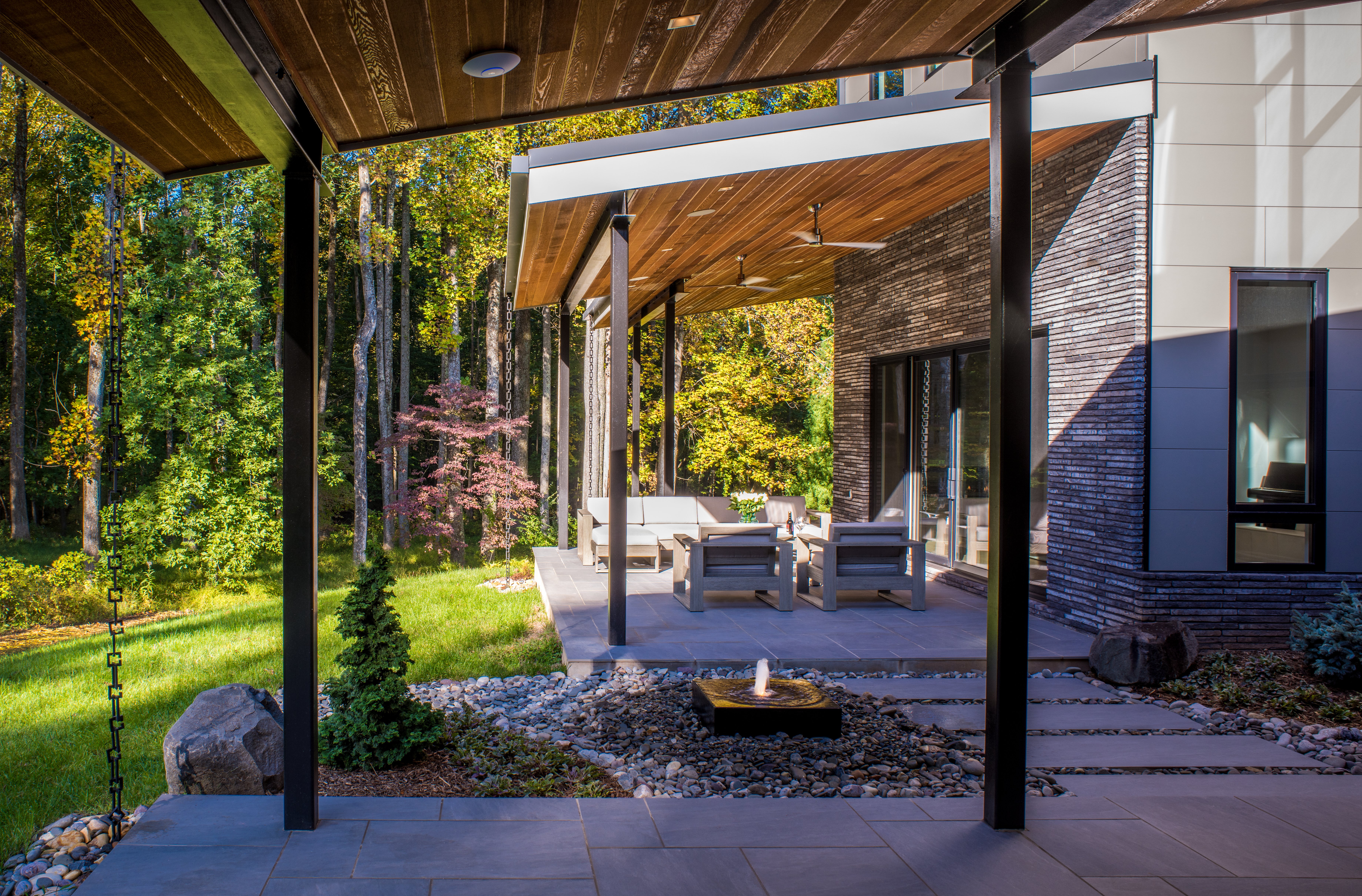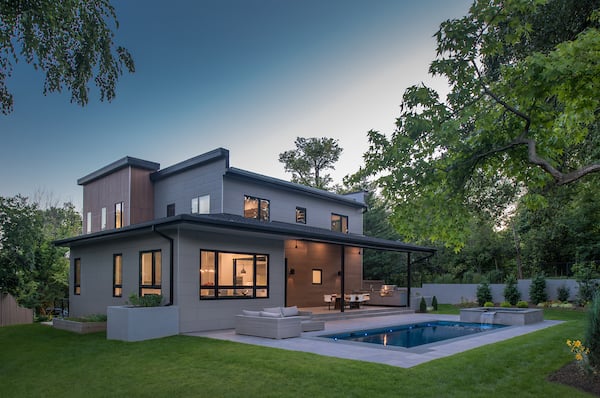Most homes are designed to face the world—toward the street, the driveway, the neighbors. But there’s something game-changing about a home that turns its focus inward. When the outdoor space becomes the heart of the layout, something unexpected happens: life slows down. Rooms feel more connected. The house works with your lifestyle instead of just containing it.
At AV Architects + Builders, we’ve seen how this simple design move—placing a private outdoor space at the center of your home—can reshape daily living. It’s not just about aesthetics; it’s about creating a rhythm that brings balance and ease into every part of your day.
By the end of this article, you’ll discover how center courtyard design unlocks flow, function, and a lifestyle that feels more personal and restorative—something many homeowners don’t realize is possible until they experience it.

The Architect House, Great Falls, Virginia, AV Architects + Builders, Photography by Maxwell Mackenzie
What Is a Center Courtyard Home—And Why Does It Matter?
In a center courtyard home, the rooms are intentionally oriented around a shared private outdoor space. It’s not an afterthought—it’s the core of the layout. That central zone becomes the organizing force for everything else. Unlike a backyard or patio off the side of the house, this courtyard is visible, accessible, and purposeful.
This inward-facing layout does more than look good. It enables smarter zoning, enhanced privacy, and a space that adapts to how you live—not just how a traditional floor plan says you should.
Need inspiration? These courtyard house plans offer a glimpse into how outdoor living becomes central to the entire experience of home.
Beyond Aesthetics: Function, Flow, and Flexibility
One of the greatest advantages of a center courtyard design is how it eliminates wasted movement. Long hallways and isolated corners are replaced with visual and physical connections between every room. Your home becomes something you flow through, not just move across.
By organizing the layout around a central space, you also gain more control over how public and private zones interact. It’s easy to host guests without disrupting your personal routines. Rooms can open up or close off, depending on the moment.
To make it successful, the courtyard itself has to work hard—offering visual beauty, comfort, and functionality throughout the seasons. It becomes a flexible living area, not just an outdoor room.
 The Woodlands House, Great Falls, Virginia, AV Architects + Builders
The Woodlands House, Great Falls, Virginia, AV Architects + Builders
The Psychology of Inward Design: Why It Feels So Different
Looking inward changes more than your floor plan—it changes your mindset. There’s something deeply grounding about a space where your views are curated and consistent. It’s architecture that supports calm, reflection, and presence.
This is especially true when the home is designed to offer both openness and refuge. In psychological terms, this is known as “prospect and refuge”—the ability to see your environment clearly while still feeling protected by it.
Over time, this layout encourages slower mornings, deeper focus, and a sense of living in rhythm with the seasons. It’s not just quieter on the outside—it creates inner quiet too.
Who Is This Design Right For?
This layout adapts to many lifestyles, but is particularly impactful for:
- Families with kids or pets
The courtyard provides a secure play area that’s always within view.
- Work-from-home professionals
You gain a buffer from distractions—and a backdrop of nature during Zoom calls.
- Empty nesters and couples
The efficient footprint and single-level possibilities offer low-maintenance luxury.
- Entertainers and hosts
Indoor-outdoor entertaining feels seamless when your guests naturally gather in the center.
- Those who prioritize wellness
Whether it’s a plunge pool, a yoga mat, or a quiet garden bench—your courtyard becomes part of your daily rituals.
And for anyone craving daily peace, a courtyard home brings a vacation-style living feel into everyday moments.

The Solar House, Arlington, Virginia, AV Architects + Builders, Photography by Maxwell Mackenzie
Design Considerations: What to Plan For
To make this concept work, the design must be intentional from day one. A few factors to consider:
-
Lot shape and orientation
Courtyard homes thrive on lots with width or depth. Sunlight and wind patterns should inform the layout.
-
Privacy
A successful courtyard shields you from the outside while opening up the interior—without sacrificing security.
-
Zoning and flow
Think about how you move through your day. The best courtyard homes are shaped around how you live, not just where walls should go.
-
Materials and maintenance
Since the courtyard is visible from most rooms, details matter. Finish selections should be durable, low-maintenance, and cohesive.
Still wondering how a courtyard layout compares to other custom home designs? This guide on home layout shapes breaks down the pros and cons of different floor plan styles—so you can better understand how a center courtyard stacks up against other options.
Why This Works for Vacation-Style Living
There’s a reason high-end resorts often place villas around a shared garden or courtyard—it works. You feel relaxed. Present. Tuned into nature without giving up comfort or convenience.
When that experience becomes your every day, you don’t need to “get away” to feel restored. A courtyard home offers year-round access to natural light, fresh air, and the kind of slow-living moments most people only get a few weeks a year.
And unlike conventional layouts, this one isn’t built to impress the street—it’s designed to impress you.







